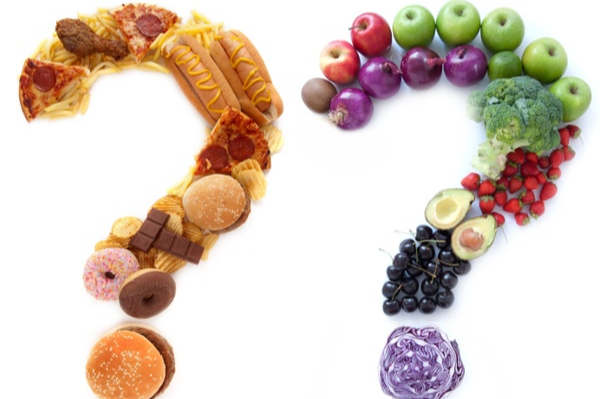For all of my 24 years in fresh produce, seemingly CPG has been upheld as a “gold standard” that fresh produce companies seek to emulate on all fronts. Somehow we have convinced ourselves that CPG harnesses some level of operational excellence and marketing mastery far beyond the feats of which we are capable in fresh produce. Whether related to an executive position or potential buyer of a produce company, there is this lingering assumption that somehow CPG has some kind of magic power that we yearn to possess. As with any David and Goliath scenario, there is a perception that Goliath possesses the upper-hand—and in some ways that is true.
That said, if you look at just the two most obvious differences between fresh produce and CPG, it’s enough to see how a direct comparison carries little weight:
- CPG allocates more dollars to marketing, and even more importantly, bases their marketing dollars on percentage of sales (in food, this ranges from 6-14%). Of course, their marketing is going to stand out, but that doesn’t mean their strategies or approach work for fresh food. After all, money can make just about any marketer look good—at least for a while.
- CPG doesn’t have to consistently contend with factors like Mother Nature or extreme perishability.
Giving credit where credit is due: it would be logical to assume that someone from Mars, Inc. could come into a fresh produce company and bring in an air of operational brilliance…but only in areas for which CPG can even begin to prepare that person. Newsflash: that certainly doesn’t include field operations, which require the polar opposite of competently operating a candy bar factory, for example. Perhaps that is why, with all these big food company buyouts of fresh produce companies and new executive hires from CPG, we see so many exits and failures. Personally, I believe that one of the root causes of this issue is the general lack of appreciation for the time it takes to learn and understand the complexities inherent in fresh produce.
While CPG experience is certainly valuable and to be respected, so is the knowledge required of fresh produce professionals, and it easily can take 2-3 years for anyone—whether just out of school or a 20+ year Exec with an MBA—to live through the seasons, understand the dynamic of the various buying relationships and existing barriers, and quite frankly, to do some homework on the history of why things are the way they are before attempting to set a new course. At DMA, we call this Seeking the Why.
From a marketing perspective, I completely understand the lure of CPG, considering the significant investment made in this largely processed food category. We are constantly reminded of how CPG markets their products, and frequently do so in admiration. For instance, Super Bowl commercials, viral social media campaigns, celebrity endorsements…and the list goes on and on. There’s nothing wrong with these activities or goals, per se, except when they are unrealistic. As I’ve said before, we cannot meet these expectations without investing in the marketing required to make these tactics a reality. Given that, why is it that CPG persists as our collective “gold standard’ for marketing performance? In this regard, expecting fresh produce to operate like CPG is essentially comparing apples to oranges…or Doritos, more accurately.
I believe the standard for fresh produce marketing is being written by a handful of brands and marketers who are working to transition marketing activities and investment from being viewed as an expense into an asset that generates equity for the company. This, of course, comes from the discipline of actually marketing fresh produce. What do I mean? Any marketer from outside fresh produce can easily identify what is missing and/or what could be better. 9 times out of 10, the fresh produce marketer could provide that same list to an outsider or investor in a matter of minutes. The problem isn’t usually know-how: in large part, it’s the lack of necessary resources to close the gap between fresh produce and dominant processed brands. Until a person has actually marketed fresh produce for several years, dealt with the unpredictability brought by Mother Nature (and it’s important to note as well that every crop is unique), grappled with the lack of marketing spend, faced the lack of buy-in from the C-Suite and/or Sales, and the vulnerable nature of shoppers’ beliefs surrounding fresh food…then all the CPG experience in the world falls short of delivering what are often unrealistic expectations.
If we want to generate CPG-esque marketing results, we need to begin emulating other industries where it makes sense while simultaneously working to forge our own approach to marketing and building brands for fresh produce. I do not believe the answer for how to elevate demand for fresh produce lies in the hands or minds outside of this industry. Our fate rests on us, and more specifically, on what we are failing to do and invest in. We must begin to understand that fresh is in demand—and if we build brands, shoppers will come—in fact, they are already here.
Have something to add? We’d love to hear your perspective—leave us your thoughts in a comment below or reach out to us on Twitter at @TheCoreBlog!
Dan’l Mackey Almy’s passion for fresh produce has paved the way for her dynamic career as an industry trailblazer. After selling produce for a decade, she recognized that in order for the industry to progress, it would be necessary for fresh produce companies to focus on how to market products more effectively. Since 2004, she has worked alongside the DMA Solutions team and progressive clients to transform marketing and elevate brands in a once commodity-centric industry. The DMA team is guided by the belief that when anyone in this sector flourishes, there is a net-positive result on people, communities, and society.
{{cta(‘bcd8a198-582f-4f95-bbc3-fd4254518f02’)}}
